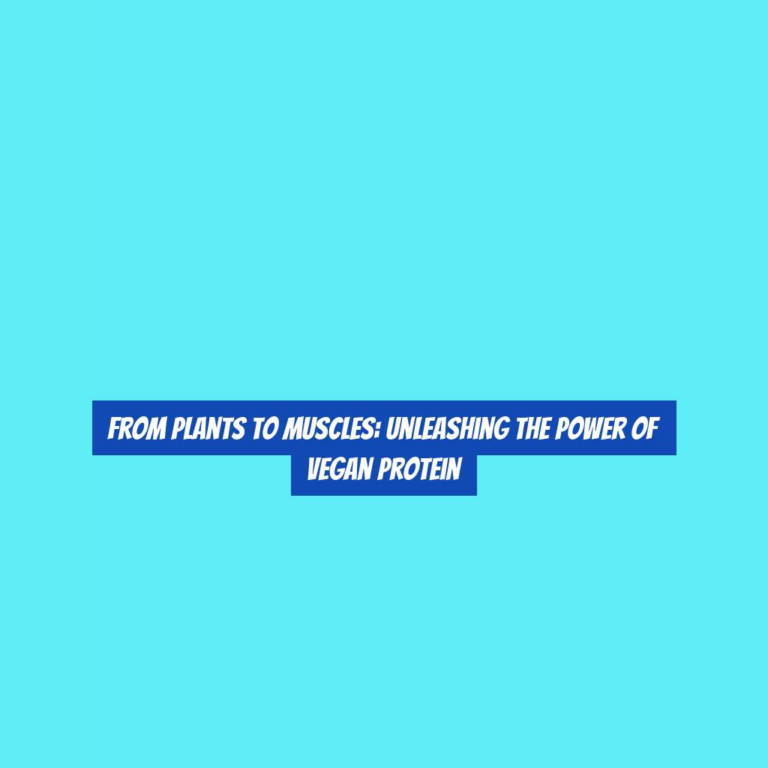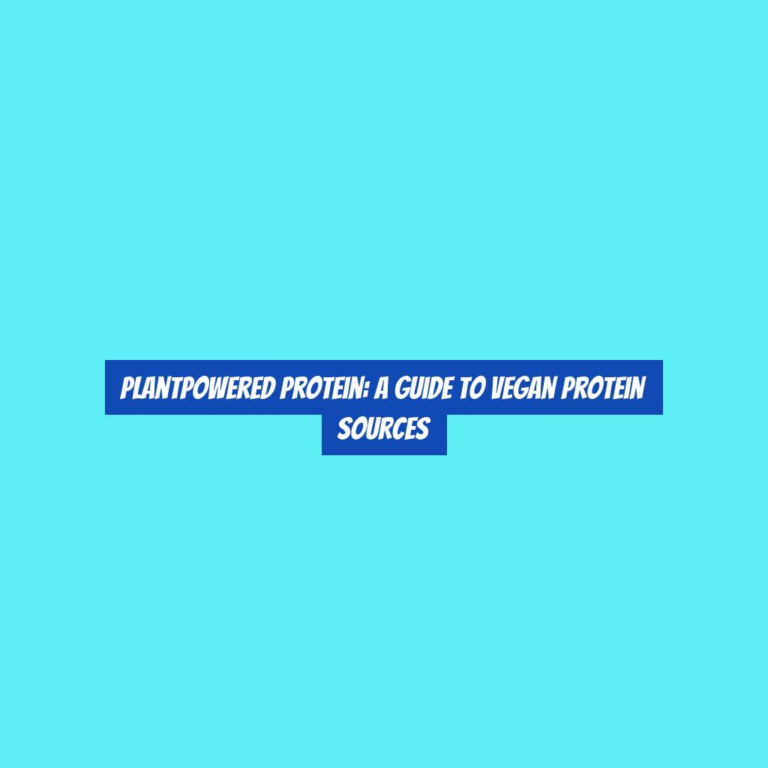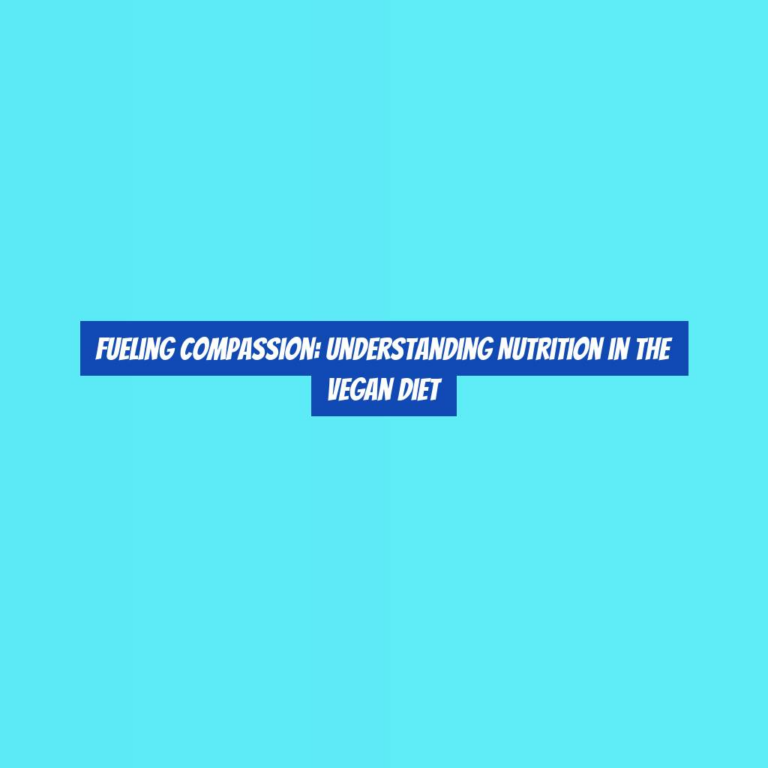Building Blocks of PlantBased Diets: Exploring Vegan Protein Sources
So, youG??ve decided to explore the world of plant-based diets and are curious about vegan protein sources. You might have heard about the benefits of incorporating more plant-based proteins into your meals, but youG??re not quite sure where to start or what options are available to you.
Well, youG??re in the right place. In this discussion, weG??ll uncover the diverse array of vegan protein sources, debunk myths surrounding plant-based protein, and provide tips for maximizing protein absorption.
But first, letG??s dive into the fundamentals of understanding vegan protein requirements and the top plant-based protein sources.
Understanding Vegan Protein Requirements
To meet your protein requirements on a vegan diet, itG??s essential to understand the sources and amounts of protein needed for optimal health. Many people worry about getting enough protein on a vegan diet, but with proper planning, itG??s completely achievable. The key is to incorporate a variety of plant-based protein sources into your meals.
Legumes such as lentils, chickpeas, and black beans are excellent sources of protein and can be included in soups, salads, and main dishes. Tofu, tempeh, and edamame are also fantastic options that can be used in stir-fries, sandwiches, and wraps.
Nuts and seeds, including almonds, chia seeds, and hemp seeds, provide not only protein but also healthy fats. Incorporating these into your diet through snacks or as toppings for oatmeal and salads can boost your protein intake.
Whole grains like quinoa, brown rice, and oats also contribute to your protein needs while providing essential nutrients and fiber.
Top Plant-Based Protein Sources
Understanding the sources and amounts of protein needed for optimal health on a vegan diet, you can now explore the top plant-based protein sources available to you.
Legumes such as lentils, chickpeas, and black beans are excellent sources of protein and can be incorporated into various dishes like soups, salads, and curries.
Tofu and tempeh, made from soybeans, are also versatile protein sources that can be used in stir-fries, sandwiches, and wraps.
Additionally, quinoa and amaranth are complete protein sources, providing all essential amino acids your body needs.
Nuts and seeds, including almonds, chia seeds, and hemp seeds, are great for snacking and can be sprinkled over yogurts or blended into smoothies for an extra protein boost.
Green peas, edamame, and spinach are other plant-based protein sources that can be added to pasta dishes, omelets, or enjoyed as side dishes.
Myths and Truths About Plant-Based Protein
There are several common misconceptions about plant-based protein that may affect your understanding of its nutritional value and benefits.
One prevalent myth is that plant-based protein is incomplete and inferior to animal-based protein. The truth is that many plant-based protein sources, such as quinoa, soy, and chia seeds, provide all essential amino acids necessary for a balanced diet.
Another misconception is that itG??s challenging to get enough protein from plant-based sources. In reality, a well-planned vegan or vegetarian diet can easily meet protein needs, as there are numerous high-protein plant foods available, including lentils, chickpeas, and tofu.
Additionally, some people believe that plant-based protein isnG??t as effective for muscle building and recovery as animal-based protein. However, research has shown that consuming adequate amounts of plant-based protein, along with resistance training, can support muscle growth and repair.
ItG??s important to dispel these myths and recognize the value of plant-based protein in promoting overall health and well-being.
Tips for Maximizing Protein Absorption
Maximize your protein absorption by pairing plant-based protein sources with foods high in vitamin C, such as bell peppers or citrus fruits. Consuming vitamin C-rich foods alongside plant-based proteins can enhance the absorption of iron, which is essential for overall protein utilization in the body.
Here are some additional tips to help you maximize protein absorption:
-
Include Probiotic-Rich Foods: Incorporating probiotic-rich foods like yogurt or sauerkraut into your meals can support a healthy gut, aiding in the efficient breakdown and absorption of plant-based proteins.
-
Opt for Sprouted Grains and Legumes: Sprouted grains and legumes contain increased enzymes, vitamins, and minerals, which can help optimize protein digestion and absorption.
-
Prioritize Adequate Hydration: Drinking plenty of water is crucial for optimal digestion and nutrient absorption, including protein. Aim to stay well-hydrated throughout the day to support the efficient utilization of plant-based proteins.
Creating Balanced Vegan Meals
To ensure a well-rounded vegan diet, consider incorporating a variety of plant-based protein sources into your meals, complemented by a diverse selection of nutrient-rich vegetables, grains, and legumes.
Start by focusing on protein-rich foods such as lentils, chickpeas, tofu, tempeh, and edamame. These options not only provide essential protein but also offer a range of vitamins, minerals, and fiber.
Incorporating whole grains like quinoa, brown rice, and oats can further enhance the nutrient profile of your meals while contributing additional protein.
Additionally, make sure to include a colorful array of vegetables such as leafy greens, bell peppers, broccoli, and carrots to supply essential vitamins, minerals, and antioxidants. Legumes like black beans, kidney beans, and black-eyed peas can also add protein and a variety of nutrients to your meals.
By combining these diverse plant-based elements, you can create balanced and satisfying vegan meals that provide all the essential nutrients your body needs.
Remember to experiment with different combinations and recipes to keep your meals enjoyable and nutritionally complete.
Conclusion
In conclusion, incorporating a variety of plant-based protein sources into your diet can provide all the essential amino acids you need to thrive on a vegan diet. By dispelling myths about plant-based protein and maximizing absorption, you can create balanced and nutritious meals that meet your protein needs.
With a little knowledge and creativity, you can enjoy the building blocks of plant-based diets and reap the many health benefits theyG??ve to offer.



